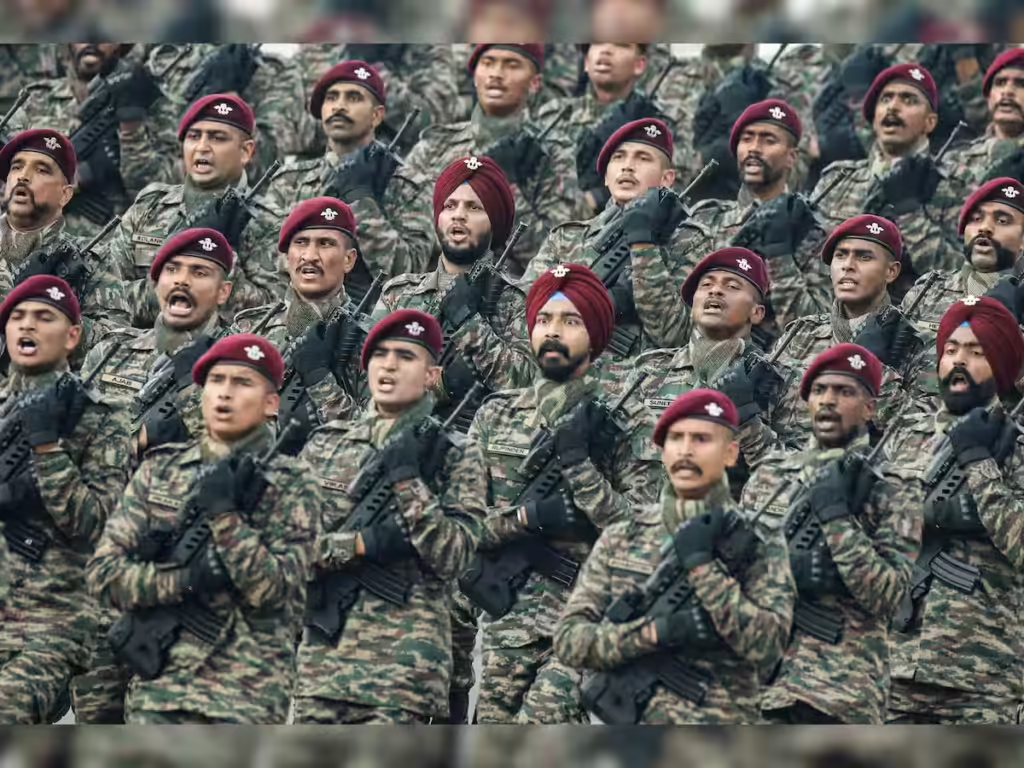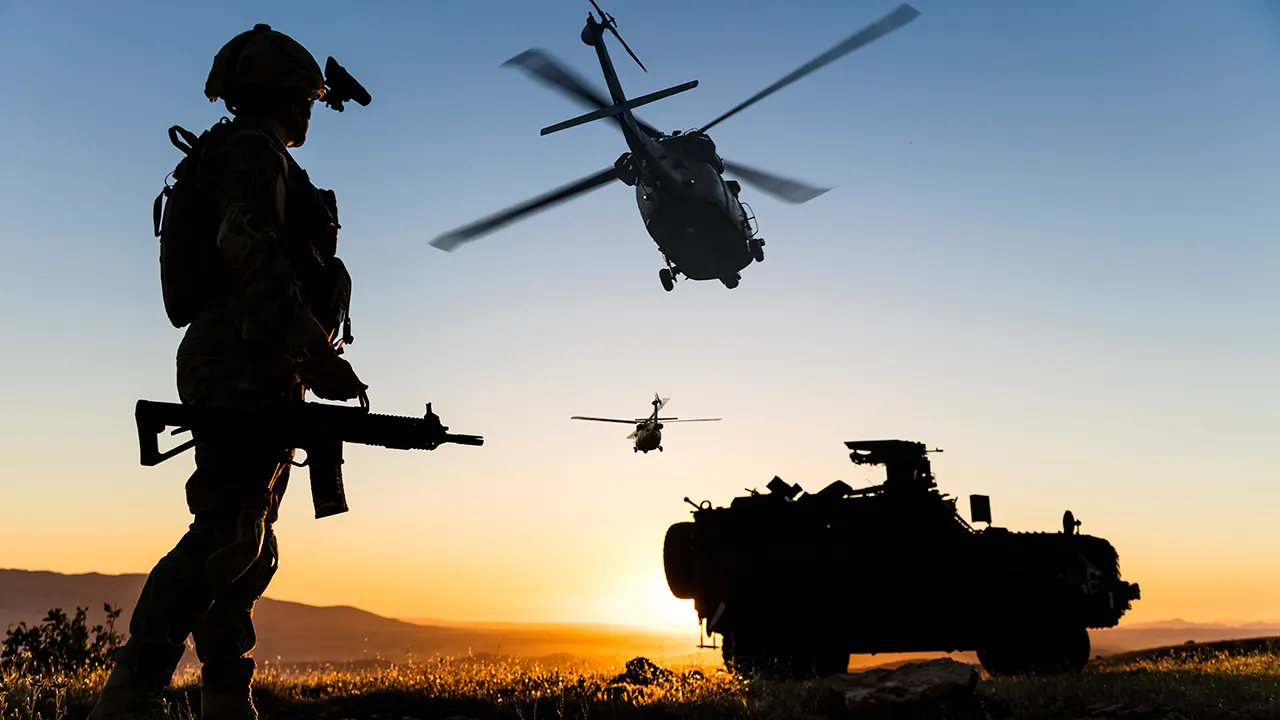In an era where global geopolitics are intricately woven with national security, understanding military strength is paramount. The size and budget of a nation’s military can provide critical insights into its strategic priorities and its influence on international relations. This article aims to shed light on the five largest militaries in the world, meticulously ranked by their troop numbers and annual budgets. By examining these criteria, we can gain a more nuanced understanding of each nation’s military capabilities.
Military strength is not merely a function of the number of troops but also the financial resources allocated to maintaining and enhancing these forces. Troop numbers offer a quantitative measure of a country’s military manpower, while the yearly budget reflects its investment in technology, training, and overall defense infrastructure. Together, these metrics paint a comprehensive picture of a nation’s military prowess.
In this blog post, we will delve into the specifics of each of the world’s top five militaries, exploring both their personnel strength and financial commitment. By doing so, we aim to provide readers with a holistic view of how these nations prepare for and engage in defense activities on the global stage. Understanding these aspects is crucial for anyone interested in the dynamics of international security and the balance of power among nations.
The United States Military
The United States military, frequently regarded as the most powerful in the world, boasts a significant number of active-duty personnel, reserve troops, and National Guard members. As of recent statistics, the U.S. military comprises approximately 1.3 million active-duty personnel. This formidable force is complemented by around 800,000 reserve troops and National Guard members, ensuring a robust and responsive military presence.
The annual military budget of the United States further underscores its dominance. With an allocation that surpasses $700 billion, it is the highest globally. This substantial budget is strategically apportioned across various branches, including the Army, Navy, Air Force, and Marines. Each branch receives funding to maintain operational readiness, support personnel, and pursue technological advancements.

The U.S. Army, being the largest branch, focuses on ground operations and is equipped with advanced weaponry and logistics support. The Navy, with its impressive fleet of aircraft carriers and submarines, ensures maritime dominance. The Air Force, renowned for its cutting-edge aircraft and space capabilities, plays a crucial role in both defense and offensive operations. The Marine Corps, known for its rapid response and amphibious warfare capabilities, provides versatile support across various terrains and conflicts.
In addition to sheer numbers and financial resources, the United States military benefits from significant technological advancements. Innovations in areas such as cyber warfare, unmanned systems, and artificial intelligence enhance the operational capabilities of all branches. These technological edge ensures that the U.S. military remains at the forefront of global defense strategies.
Moreover, the global presence of the U.S. military cannot be overstated. With bases and personnel stationed in numerous countries, the United States maintains a strategic advantage, enabling rapid deployment and sustained operations worldwide. This extensive network supports not only national security but also international stability and humanitarian efforts.
The People’s Liberation Army of China
The People’s Liberation Army (PLA) of China is the largest military force in the world, boasting approximately 2 million active-duty personnel. The PLA is composed of several branches: the Army, Navy, Air Force, Rocket Force, and Strategic Support Force. Each branch plays a crucial role in maintaining China’s defense capabilities and advancing its strategic interests. The PLA Army, with the majority of personnel, focuses on ground-based military operations. The PLA Navy, with around 300,000 personnel, is responsible for maritime security and power projection. The PLA Air Force, comprising about 400,000 members, ensures air superiority and supports ground and naval operations. The PLA Rocket Force, with an estimated strength of 120,000, manages China’s strategic missile arsenal. Lastly, the Strategic Support Force, with an undisclosed number of personnel, specializes in cyber, electronic, and space warfare.
China’s military budget is the second-largest globally, following the United States. In 2022, China’s defense budget was approximately $230 billion, reflecting a consistent increase over the past decade. This substantial budget is directed toward several key areas: modernization of military equipment, development of advanced technologies, and expansion of overall military capabilities. The PLA has been investing heavily in next-generation fighter jets, naval vessels, missile systems, and cybersecurity measures. This focus on modernization is part of China’s broader strategy to transform the PLA into a world-class military force by 2049, coinciding with the centennial of the People’s Republic of China.

The strategic objectives of the PLA extend beyond national defense. As China seeks to assert its influence on the global stage, the PLA plays a critical role in regional and global power dynamics. The military’s activities in the South China Sea, its participation in international peacekeeping missions, and its increasingly sophisticated joint exercises with other countries underscore its ambitions. Additionally, the PLA’s advancements in space and cyber domains reflect China’s intent to secure a leading position in these critical areas of future warfare. Overall, the People’s Liberation Army of China is a formidable force that significantly shapes the regional and global security landscape.
The Indian Armed Forces
The Indian Armed Forces stand as one of the world’s largest military entities, boasting significant troop numbers across its various branches. The Indian Army, being the largest component, comprises over 1.2 million active personnel, with an additional 960,000 in reserve. This substantial force is tasked with maintaining security and order across the country’s extensive land borders, which include challenging terrains like the Himalayas.
The Indian Navy, though smaller in size compared to the Army, plays a crucial role in safeguarding the nation’s maritime interests. With a fleet that includes aircraft carriers, submarines, and a variety of surface vessels, the Navy ensures the protection of India’s 7,500 km coastline and its strategic maritime zones. The Indian Air Force, with around 140,000 active personnel, complements the Army and Navy by providing aerial defense and support. It operates a diverse range of aircraft, including fighter jets, transport aircraft, and helicopters, making it a versatile force in both offensive and defensive operations.

Additionally, India’s paramilitary forces, which include the Border Security Force (BSF) and the Central Reserve Police Force (CRPF), further bolster the country’s defense capabilities. These forces, numbering in the hundreds of thousands, are instrumental in maintaining internal security and managing border patrol operations.
India’s military budget is one of the highest in the world, with annual allocations exceeding $70 billion. This budget facilitates defense procurement, modernization of equipment, and the maintenance of strategic deterrence capabilities. Investments are directed towards acquiring advanced weaponry, upgrading existing platforms, and enhancing cyber and space capabilities to maintain a technological edge.
Despite its formidable strength, the Indian Armed Forces face significant challenges. Ongoing border disputes with neighboring countries like China and Pakistan necessitate a constant state of vigilance and readiness. Additionally, regional security issues, such as terrorism and insurgency, require continuous attention and resources. These challenges underscore the importance of India’s strategic defense initiatives and its commitment to maintaining a robust and responsive military force.
The Russian Armed Forces
The Russian Armed Forces, recognized for their formidable military capabilities, stand as a significant force on the global stage. The total number of active-duty personnel in the Russian military is approximately one million, with an additional two million reservists. This extensive manpower is distributed across various branches, including the Army, Navy, Aerospace Forces, and Strategic Missile Troops. Each branch contributes to the overall strategic strength and versatility of Russia’s military operations.
The Army, the largest component, is primarily responsible for land-based military operations and includes infantry, tanks, and artillery units. The Navy, a pivotal maritime force, encompasses the Northern Fleet, Pacific Fleet, Black Sea Fleet, and Baltic Fleet, ensuring Russia’s naval dominance in key regions. Meanwhile, the Aerospace Forces integrate the Air Force, air defense systems, and space operations, highlighting Russia’s commitment to maintaining aerial and extraterrestrial superiority. The Strategic Missile Troops, a critical arm of the military, manage the country’s intercontinental ballistic missiles (ICBMs), underscoring the nuclear deterrence aspect of Russia’s defense strategy.

Russia’s military budget, which stands at approximately $65 billion annually, reflects its emphasis on modernization and technological advancement. Recent years have seen significant investments in new weaponry, including advanced fighter jets, submarines, and hypersonic missiles. The modernization efforts are aimed at enhancing the operational efficiency and combat readiness of the Armed Forces. Strategic defense initiatives are also a crucial component of Russia’s military expenditure, focusing on cyber warfare capabilities, missile defense systems, and electronic warfare technologies.
Furthermore, Russia’s military strategies are deeply intertwined with its national security policies and geopolitical ambitions. The country’s approach to military engagement often features a combination of conventional and asymmetric tactics, designed to maintain a strategic advantage in various theaters of conflict. This multifaceted strategy not only bolsters Russia’s defensive posture but also projects its influence on global security dynamics. Through these efforts, Russia continues to assert itself as a dominant military power with significant implications for international stability.
The North Korean Military
The North Korean military, formally known as the Korean People’s Army (KPA), boasts one of the largest standing armies globally. It is composed of approximately 1.2 million active-duty personnel, placing it among the top five largest militaries by troop numbers. In addition to its active forces, North Korea maintains a significant reserve force, estimated to be around 600,000 individuals, and a vast paramilitary force that includes the Worker-Peasant Red Guards and the Youth Guards, collectively adding several million more potential combatants to its ranks.
Despite the country’s limited financial resources, North Korea allocates a substantial portion of its GDP to its military. The official defense budget is estimated to be around $1.6 billion annually, although some estimates suggest the actual expenditure could be higher when accounting for clandestine funding and economic activities directed towards military ends. A significant portion of this budget is channeled into the development and maintenance of its nuclear and ballistic missile programs, which are central to North Korea’s strategic objectives.

The strategic goals of the North Korean military are heavily influenced by the regime’s desire to ensure its survival and maintain its grip on power. The development of nuclear weapons and missile technology serves as a critical deterrent against perceived external threats, particularly from the United States and South Korea. This focus on deterrence is underscored by frequent military drills and missile tests, which serve both as a demonstration of capability and a means of political signaling.
The extensive military apparatus of North Korea has profound implications for regional and international security. The country’s aggressive posture and pursuit of advanced weapons technology have led to heightened tensions on the Korean Peninsula and beyond. Neighboring countries, along with the international community, continue to grapple with strategies to manage and mitigate the potential threats posed by North Korea’s military ambitions. The combination of a large standing army and an advancing nuclear arsenal positions North Korea as a pivotal player in regional security dynamics.









